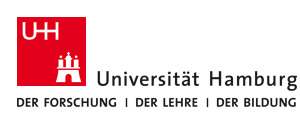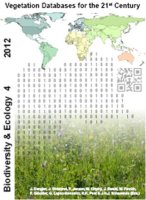Biodiversity & Ecology
Short Database Report Open Access
Vigie-flore – a nationwide monitoring programme for common plant species and plant communities in France
Keywords: citizen-science; plant species abundance.
 English
English
Abstract: Vigie-flore (http://www.vigie-flore.fr; GIVD ID EU-FR-001) is a nation-wide plant monitoring programme aiming to detect temporal trends in the abundance of common plant species in France. This monitoring program is part of the more general biodiversity monitoring programme Vigie-nature (www2.mnhn.fr/vigie-nature/) steered by the French Musée National d’Histoire Naturelle. Similarly to other Vigie-nature sections, Vigie-flore is a citizen science program that is based on the involvement of volunteer expert botanists. The programme is jointly steered by the “Conservation des Espèces, Restauration et Suivi des Populations” lab (http://www2.mnhn.fr/cersp/) and by Tela Botanica (http://www.tela-botanica.org), the network of French speaking botanists. Vigie-flore uses a two-stage standardized sampling scheme. More than 5,500 1 km² squares are systematically distributed throughout France, following a regular grid with 10 km between each square. This systematic distribution of monitoring sites provides an accurate and representative picture of the different habitat types. When a volunteer enrols, a convenient (=closely located) square is assigned to him/her. Within each 1km² square, eight permanent plots are evenly distributed together with eight replacement plots in case the former are not accessible. The volunteers are asked to monitor as many permanent plots as possible within a square (up to eight), but data on single permanent plots are nonetheless accepted. The permanent plots are rectangular areas of 10 m² that are subdivided into 10 1 m² squares in which the volunteers record all vascular plants once a year, in spring. The abundance of each species can be measured as the frequency of occurrence across the 10 1 m² squares. Vigie-flore was launched in spring 2009 and involves, as of January 2012, 120 volunteers monitoring plant communities in 165 1 km² squares. So far, this yielded data for a total of around 1,800 species. Such data are currently used to examine spatial patterns in plant community composition. These patterns are related to environmental variables (e.g. habitat type, habitat fragmentation) to identify some of the drivers of plant community composition. In the long term, the aim is to analyse temporal trends in plant community composition, to identify underlying mechanisms and also to understand ecological consequences using trait-based approaches.
Suggested citation:
Machon, N., Porcher, E., Mathieu, D. (2012): Vigie-flore – a nationwide monitoring programme for common plant species and plant communities in France. – In: Dengler, J., Oldeland, J., Jansen, F., Chytrý, M., Ewald, J., Finckh, M., Glöckler, F., Lopez-Gonzalez, G., Peet, R.K., Schaminée, J.H.J. [Eds.]: Vegetation databases for the 21st century. – Biodiversity & Ecology 4: 378–379. DOI: 10.7809/b-e.00168.


